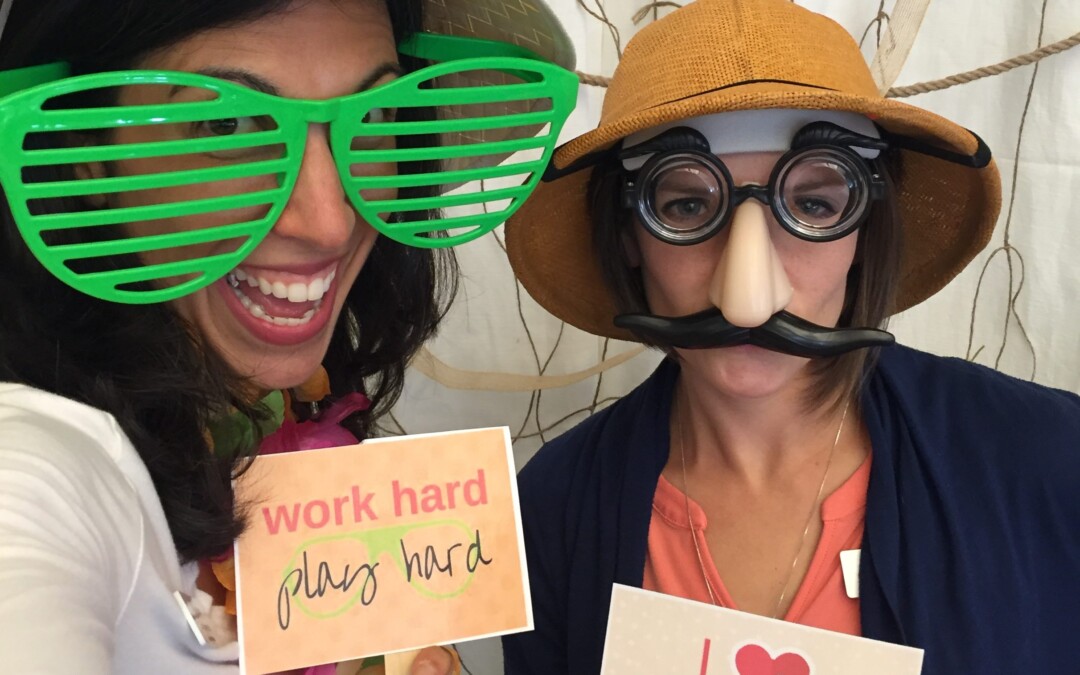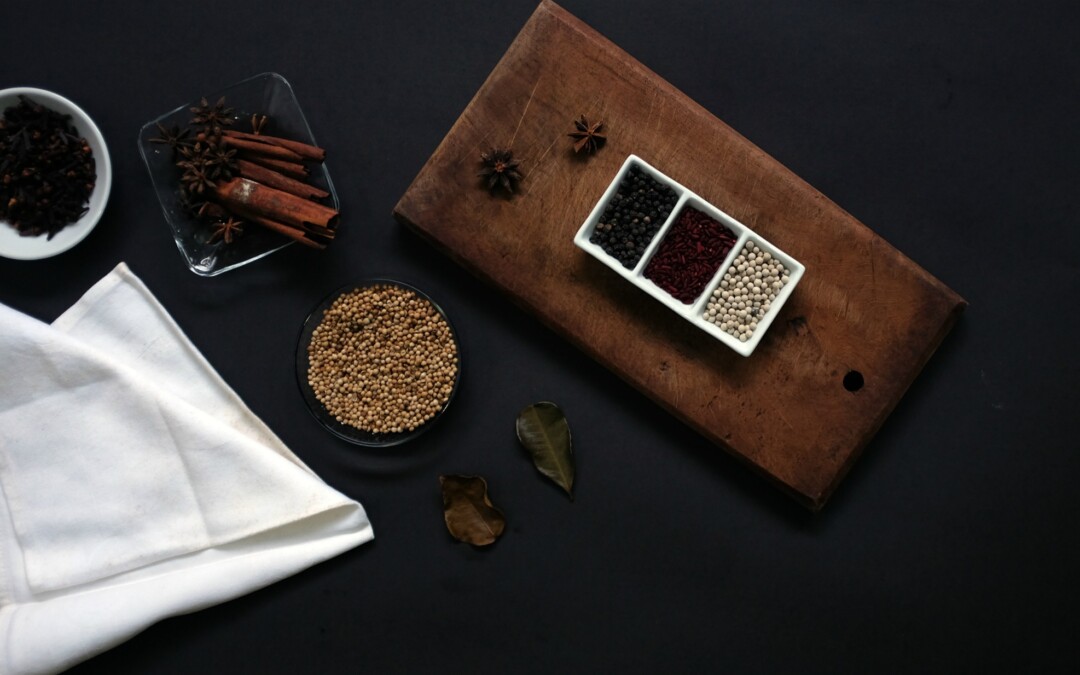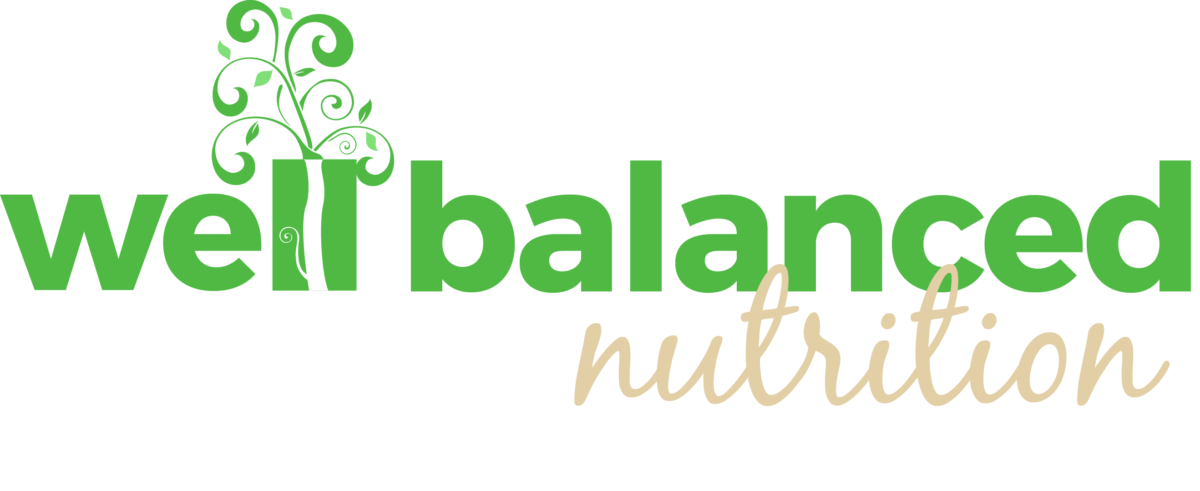
by Lucy | Oct 20, 2016 | Motivational Mondays
Monday, Oct 24th
I often have people bring me food containers to determine if it’s a healthy option or not. You may have seen or heard that the FDA is working on redefining the term “healthy” on food labels due to an ongoing battle with Kind Bars.
Here’s the quick and simple Well-Balanced Way to know if you are making a healthy choice:
- Can you read, pronounce and explain all the ingredients on the ingredients list?
Polydextrose, soy lecithin, anhydrous milk fat, glycerin, hydrolyzed gelatin… These are just a few ingredients found in the Atkins Advantage Bar.
A good guideline for the ingredients issue, can you explain to a 3-year old where it came from and why it is in your food? See Mindfulness starts here – thinking about the entire process.
- How many ingredients does it include?
I made an interesting discovering while looking at a label for lightly salted dry roasted peanuts – you’re thinking it’s peanuts and salt, right? Yea, plus the 13 other ingredients to add flavor and shelf-life. Yikes!
- How big is the portion size?
Portion size is at the very top of the label because it’s super important! Some companies still use an unusually small portion size (I’m looking at you ice cream containers) that many people do not follow. The consumer assumes they are doing great because “it’s only 220 calories per serving!” Nevermind, that they polished off the entire pint and now that 220 calories has turned into an extra 880 calories. WOW!
- What is the sodium content?
This is more important for some than others, especially if you have salt-sensitive hypertension (high blood pressure). Most of us would benefit by decreasing our sodium intake; however, at Well-Balanced Nutrition we want you to season your foods! The amount of salt added at restaurants and fast food chains will almost always be significantly more than what you prepare at home.
- What’s the goal?
Is this a snack or a meal? If you have not had the pleasure of playing Lucy’s game good vs better it’s important to note there is no “bad food.“
There are good choices and better choices. Of course, I’m not encouraging cookies for breakfast, but that may be better than going hungry. A better choice than cookies is whole wheat toast, peanut butter, and a piece of fruit.
Food for thought:
Is your food really as healthy as the label claims? There may be more to the story than they want you as the consumer to know. Now you have more tools and knowledge to arm yourself for your next trip to the grocery store!
List the top 3 foods you will compare next time you go grocery shopping:
- _______________________________
- _______________________________
- _______________________________

by Lucy | Oct 15, 2016 | Motivational Mondays
Monday, October 17, 2016
As your favorite dietitians, Kristen and I strive to give you lots of motivation, inspiration, and information to eat and live well-balanced. It is our goal to fill, not just your inbox, but your mind and wellness toolbox with plenty of resources and ideas to live a healthy and fulfilled life.
In the height of the election season, I cannot get used to what each of us is subjected to daily – if not hourly – with all the news, social media, and other interferences constantly bombarding us with negative messaging.
Politics aside, I’d like to speak about how you feed your mind. Aside from your weekly Motivational Monday and Wellness Wednesday articles how are you choosing to input information into this computer system we call our minds? Darren Hardy says it best in a recent Darren Daily episode that likens our brains to a Google search. The search engine is only as good as the information available – do you have enough reliable information on living well in your database?
I am always seeking to further develop my personal growth and continue to improve myself. I choose to listen to podcasts such as EntreLeadership that build me up and feed my mind with new and motivating ideas to be a better leader. I enjoy reading books like Farmacology that provide information to using food as medicine. I attend Grace Church as a regular reminder of how to continue to grow spiritually.
Food for thought:
Here’s your chance to put this to practical application. Take a moment to list your common media diet (such as what news you watch or read, what social media you enjoy, or what radio stations or podcasts you’re listening to)
- ____________________________ ________
- ____________________________ ________
- ____________________________ ________
Next rank each one on a scale 1 to 5 – 1 being “junk food” for the brain and 5 include thoughtful, well-balanced resources or information.
For example, Snapchat is on my list and I’d give it a 2, because realistically that is fluff in helping me reach my personal development goals (but it’s so much fun!)
Bonus points! Take a moment to list two or three resources you would like to utilize to reach your own personal goals
- ______________________________________
- ______________________________________
- ______________________________________

by Lucy | Oct 9, 2016 | Motivational Mondays
Monday, October 10, 2016
On occasion, I get the surprising question in the middle of a client session “well, what do you eat?!” It’s human nature to be curious – plus most people figure out early on that I’m an open book.
I had the opportunity to order and take lunch to our new office (yay!!!) to share with my lovely business partner, Kristen, and our small business lawyer, Richard Bobholz, a couple weeks ago. I noticed a few things that make us dietitians unique in our eating habits.
During lunch, Kristen pulled out the BBQ chicken from City Barbecue, which was probably about 10 to 12 ounces. Seriously y’all, this chicken breast was the same size as her head!
As dietitians, we do not assume the portion at the restaurant is one serving size. Everyone needs a different amount of energy each day, but most people are satisfied by 3-6 ounces of protein per meal.
Don’t forget the sides! Before picking up lunch, I was on the phone reading Kristen the long list of side options, including but not limited to coleslaw, french fries, baked beans, hush puppies, etc. Our lawyer picked baked beans and mac & cheese; meanwhile, the dietitian got coleslaw and green beans. To break it down, Kristen’s plate was covered with half vegetables and a more personalized serving of chicken. (She also enjoyed some of the Texas toast included!)
We may not eat much, but we do eat often! During lunch, Richard mentioned he had not eaten anything for over 7 hours because he got busy during the workday. Kristen and I sighed as we both would have passed out or become quite hangry. There is no magic formula to eating 3 times versus 6 small meals, but I know first hand if I wait too long in between eating I’m much more likely to overindulge and much less likely to gravitate toward healthy foods.
Food for thought:
There is not a one-size-fits-all diet – different approaches work for different bodies. There are, however, lots of little things each of us can do to make well-balanced choices every day.
Let us know in the comments below how you eat like a dietitian!

by Lucy | Oct 2, 2016 | Motivational Mondays
Monday, October 3, 2016
I recently had the pleasure of meeting with one of my first clients, I will call her Allison, from last year who has done remarkably well reaching her goals while working with Well-Balanced Nutrition and Weight Watchers. I’m so proud of Allison for committing to her own well-being and her change in attitude and behaviors – must be all those tasty roasted vegetables!
Returning home from a fun summer vacation in Florida, Allison came back unmotivated to get back in the groove. After reviewing her Fitbit data, she was horrified to realize she only exercised 4 times during the entire month of August where she was previously working out up to 6 times a week. During our session, it came to light that Allison had not fallen that far off track, but she felt like she was back to her old ways. Together we came up with an action plan to get her back in motion and successfully packing well-balanced lunches and snacks for the workweek.
You may be sitting there thinking, “Yep, that sounds familiar.” You are not alone!
Life happens.
If you find yourself in a similar situation, check out a few tips below to get you back on the road to your most healthy and well-balanced self.
Start small. If you’re feeling mentally unbalanced perhaps just 5 minutes of prayer, journaling or meditation will offer the peace your mind craves. Sometimes, the hardest part is getting off the starting line simply because it feels like there is too much to do. Living healthy does not need to be complicated or include a complete 180 degree turn. If you’re currently not moving during the day then adding a 10 minute walk at lunch is a small yet powerful change to live well.
Make it easy. I’m so grateful for Bulldega market in downtown Durham that makes it easy for me to pick up fresh local produce for dinner or a quick lunch from their prepared food fridge. Another way to make it easy is by picking one day a week to do a bulk of your chopping or food prep. Spend a couple hours on Sunday and you will have food ready to heat and eat for the rest of the week.
Pick only delicious & nutritious. Eating well should taste good! Add salt or other seasonings and herbs to your meals. Trust me, you are likely not adding nearly as much as the fast food and sit down restaurants you may be frequenting instead of cooking at home. Check out this tasty resource – RawSpiceBar – for monthly spice packets and recipes delivered to your front door!
Food for thought:
I don’t know about you, but I am my own biggest critic. It’s okay to have high expectations, but even better to practice self-love.
What is one way you can better take care of your own wellness this week?

by Lucy | Sep 24, 2016 | Motivational Mondays
Updated: Monday, April 2, 2018
The temptation to quit will be greatest just before I am about to succeed. -Chinese proverb
I am reading a very short book called, The Dip by Seth Godin. This is “A little book that teaches you when to quit (and when to stick).” At the beginning of the year, many of us felt called to make new habits and become healthier. Perhaps that included a gym membership, buying a few self-improvement books, or starting a clean eating plan.
Inevitably, real life keeps happening. No matter how good our intentions there is always a dip – where the fun fades and the journey feels HARD. The book is a reminder to pause and discern if it is the inevitable dip or a dead-end that is ultimately keeping you from succeeding.
In case you’re feeling like some of your new healthy habits are not working here are 3 steps to take to move through the dip.
- When those negative thoughts start to invade your brain say to yourself “cancel, cancel, cancel!“
As the meditation and hypnosis expert Chel Hamilton reminds us, use your inside voice – inside your head that is – or else people might start to look at you funny. The benefit of “cancel, cancel, cancel” is you stop negative thinking in its tracks instead of following those thoughts down the dark hole of despair.
- Focus on the positive – Clearly, being healthy is important to you.
Take a moment to pat yourself on the back for at least 3 to 5 healthy choices you made in the past week. This action step will redirect your negative thinking, allowing you to reinforce the positive truths and behaviors.
- Identify the trigger – What was the situation that caused your mind to spin into doubt or frustration mode? For me, it tends to be that I am overtired, too self-absorbed or caught in the comparison trap.
By identifying and recognizing your triggers, you empower yourself to redirect and overcome negative thinking.
Food for thought:
Remember, the darkest hour comes just before dawn, but that morning light is coming.
When your journey doesn’t seem to be taking you where you want to go, be gentle with yourself. These things take time and consistency.


by Lucy | Sep 17, 2016 | Motivational Mondays
Monday, September 19, 2016
Last week while hanging out with some of my most favorite high school pals, I had the opportunity to spend time with my very good friend, Erik… he’s come a long way from our high school graduation and I am so proud of the man he’s become. From sneaking out and “borrowing” the car in the middle of the night as an unruly teen to now being part of an international Rugby team, we can all learn about the effects of peer pressure from Erik’s story.
As I am reminded by Jim Rohn, we are a product of our surroundings. Jim suggests you are a sum of the 5 people you spend the most time with. Take some time this week to reflect on your peer-choices and decide if those folks are lifting you up to your higher potential.
Erik grew up in a different kind of household than most of us at our private Catholic school. He did not have a college savings fund and decided to join the Marines after graduation. Needless to say, being in the war had a profound and long-lasting effect on Erik’s mental health. I’m proud of him for overcoming the PTSD that he suffered and for becoming a successful and caring boss, managing a local warehouse in Ohio.
Erik, like many of us, has been on a journey to find himself in this world. He is fun-loving and social – always making time to hang out with friends and play sports such as baseball and rugby.
It’s been neat to see how positive peer pressure has worked in his life… Erik continues to hang out with friends from our high school days who are also young professionals, many of whom are now married and starting their own families. After the first 6 months working in his big boy manager job, Erik found himself with a surplus of cash on hand. His first thought was to use that money and buy a Harley Davidson motorcycle, but after thinking about it, he decided to invest his money in mutual funds to save for more financial freedom in the future.
This is a big deal! Just 2-3 years ago this would not have been the same outcome. Between growing up, turning 30, and choosing to surround himself with positive peer pressure, Erik has shown tremendous growth and maturity.
This is a great example of how the relationships and people in our life can impact our choices. That is why I encourage you to reflect on your relationships and decide how they are affecting your day-to-day choices such as what you’re eating and drinking. Or maybe bigger life choices, such as financial investments or what career path to follow.
Food for thought:
Who are you hanging out with? Do you support the lifestyle of your closest friends and acquaintances?
Are they eating well-balanced or usually going out for energy-dense/nutrient-poor fast food? Do your friends or peers exercise or engage in regular physical activity?







